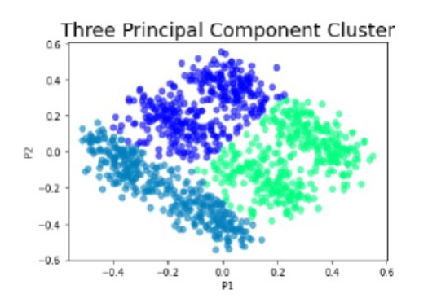


Indian Journal of Science and Technology
DOI: 10.17485/IJST/v16i41.1256
Year: 2023, Volume: 16, Issue: 41, Pages: 3605-3616
Original Article
J Meghana1, J Hanumanthappa1, S P Shiva Prakash2*, Kiril Krinkin3
1Department of Studies in Computer Science, University of Mysore, Mysuru, Karnataka, India
2Department of Information Science and Engineering, JSS Science and Technology University, Mysuru, Karnataka, India
3Researcher, Co-evolutionary Artificial Intelligence, Cyprus
*Corresponding Author
Email: [email protected]
Received Date:24 May 2023, Accepted Date:22 September 2023, Published Date:07 November 2023
Background: The Social Internet of Things (SIoT) combines IoT with social networking, enabling objects to interact based on social relationships and facilitating user-device interactions. However, SIoT networks generate massive data that must be transmitted and processed efficiently. We propose a clusterbased aggregation model for SIoT to address this, integrating relationshipcluster head selection with K-Means and data compression using Huffman coding. Objectives: The proposed model utilizes K-Means to select cluster heads based on object relationships. Objects are clustered using K-Means, and a Decision Tree considers object profiling and relationships to choose the cluster head. Selected cluster heads employ Huffman coding to compress data before transmission to the sink node. Methods: The data are aggregated at the cluster head and it is compressed before sending it to the destination device. Model is evaluated through simulation-based experiments using the SIoTCCN simulator. Findings demonstrate that our proposed model outperforms existing approaches in terms of energy consumption, network lifetime, and data aggregation accuracy. Findings: Evaluation metrics include Silhouette Score, Number Distance between Train and Test K-Means, BIC Score, and Gradient of BIC Scores. Results for our proposed model include a Silhouette score of 0.459 for cluster numbers 2, 3, and 4, -1148.951 distance between train and test K-Means, -5227.080 BIC Score, and -96.445 Gradient of BIC score. For the Relation-Based clustering approach without data compression, the Silhouette score is 0.6266, -203.345 distance between Train and test KMeans, -7266.080 BIC Score, and -61.415 Gradient of BIC Scores. The Data Compression-enabled cluster-based aggregation model without relationshipbased clustering achieves a Silhouette score of 0.58, -467.890 distance between train and test K-Means, -8981.786 BIC Scores, and -94.244 Gradient of BIC Score. Novelty: Integrating relationship-cluster head selection with K-Means and data compression with Huffman coding to develop a cluster-basedaggregation model for SIoT, demonstrating its potential to enhance SIoT performance.
Keywords: Clusterbased model; Cluster head selection; Data aggregation; Data compression; Social Internet of Things
© 2023 Meghana et al. This is an open-access article distributed under the terms of the Creative Commons Attribution License, which permits unrestricted use, distribution, and reproduction in any medium, provided the original author and source are credited. Published By Indian Society for Education and Environment (iSee)
Subscribe now for latest articles and news.